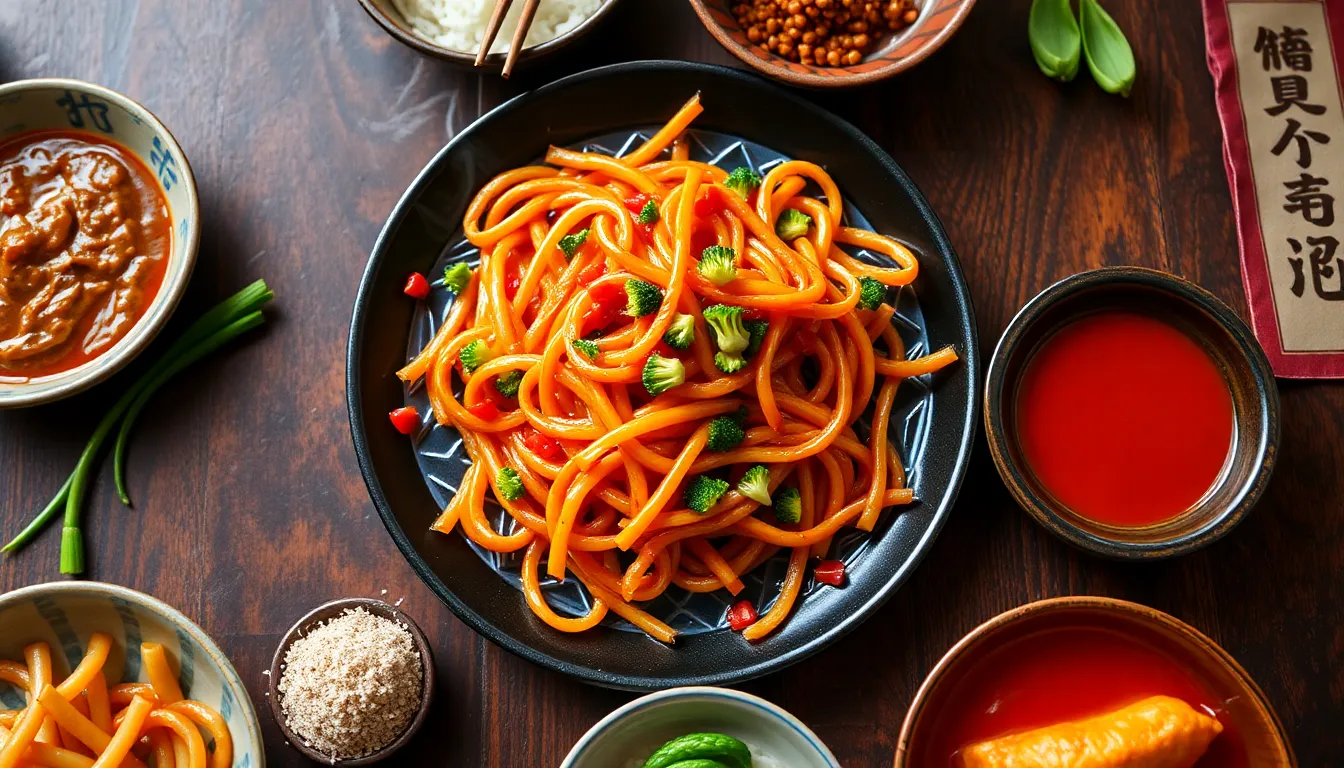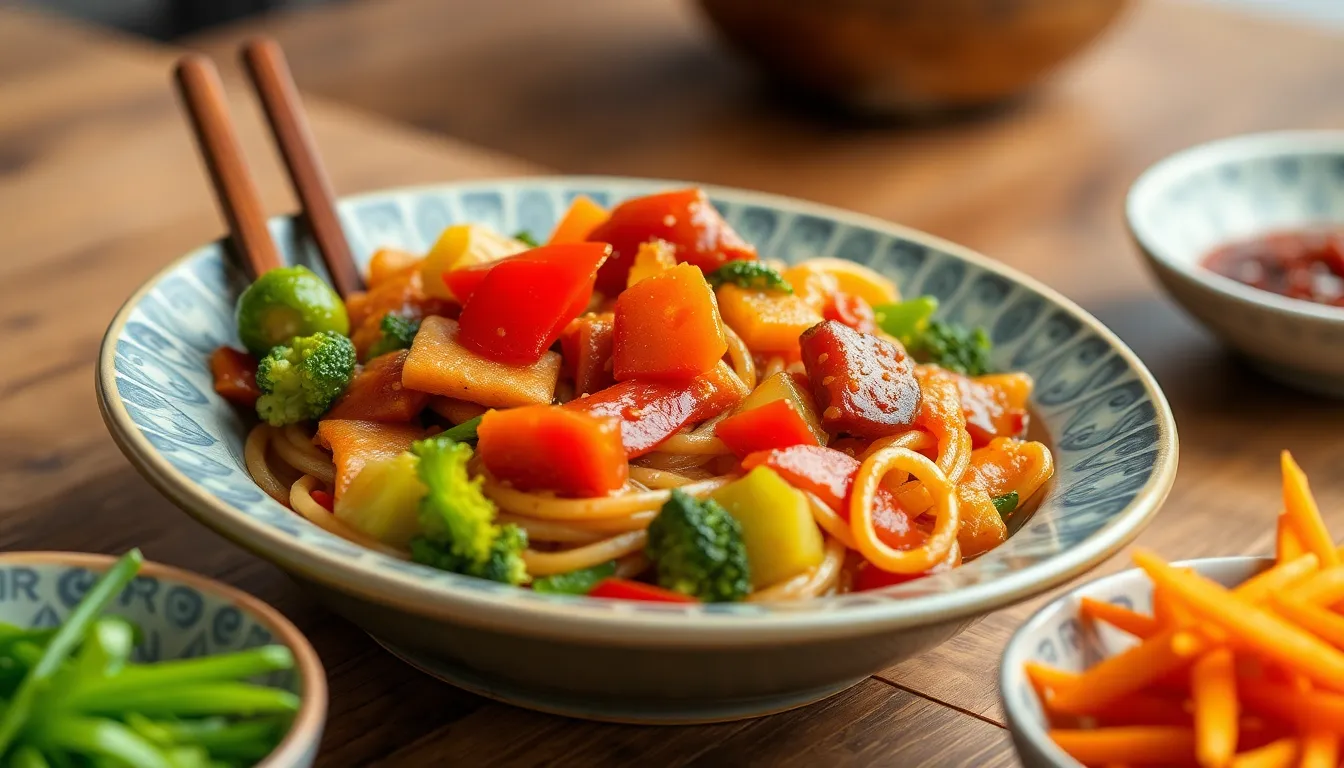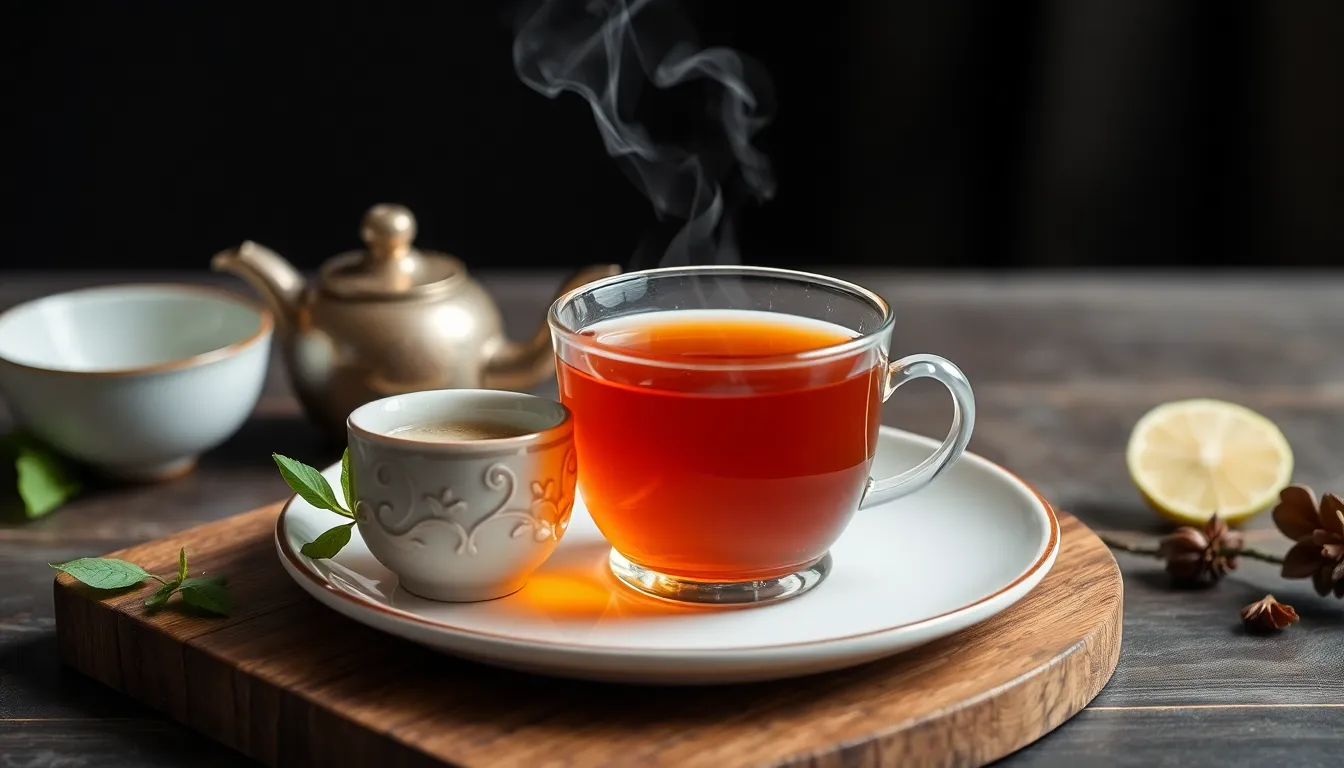Decoding Chinese Menus: What to Order and How to Make It at Home
Introduction: Journey into the Culinary Heart of China
Chinese cuisine is a vibrant tapestry woven from thousands of years of history, geography, and culture. The diversity across its regions reflects an array of flavors, ingredients, and cooking techniques. Understanding the nuances of a Chinese menu is essential for anyone looking to enjoy an authentic culinary experience—whether you’re dining out or attempting to recreate those cherished dishes at home.
This article will serve as your compass, helping you decode the complexities of Chinese menus while also empowering your home cooking escapades. Prepare to embark on a flavorful journey that unveils the heart and soul of Chinese cooking!
Section 1: Understanding the Basics of Chinese Cuisine
1.1 The Four Major Chinese Regional Cuisines
China boasts a rich culinary heritage characterized by four major regional cuisines. Each has its own unique flavors, cooking techniques, and signature dishes:
- Cantonese Cuisine: Known for its emphasis on fresh ingredients and light seasoning, Cantonese dishes often incorporate steaming and stir-frying techniques. Popular dishes include Dim Sum and Sweet and Sour Pork.
- Sichuan Cuisine: Renowned for its bold flavors and liberal use of spices, Sichuan cuisine often showcases the famous pungency of Sichuan peppercorns. Signature dishes include Kung Pao Chicken and Mapo Tofu.
- Hunan Cuisine: Hunan food is characterized by its spiciness and use of smoked and cured ingredients. The flavors are robust, making dishes like Hunan Beef and Spicy Fish a must-try.
- Northern Cuisine: This cuisine emphasizes wheat-based products like dumplings and noodles. Rich, hearty dishes such as Peking Duck and various noodle soups define this culinary style.
1.2 Common Ingredients in Chinese Cooking
Chinese cooking is built upon a foundation of staple ingredients that contribute to its distinct flavors. Below is a table that summarizes common ingredients, their uses, and possible substitutes:
| Ingredient | Common Use | Possible Substitutes |
|---|---|---|
| Soy Sauce | Seasoning and marinade | Tamari, Coconut aminos |
| Rice Vinegar | Dressing and flavoring | Apple cider vinegar |
| Hoisin Sauce | Sauce and glaze | BBQ sauce |
| Szechuan Pepper | Flavoring and heat | Black pepper (less spicy) |
| Bok Choy | Stir-fries and salads | Kale, Swiss chard |
Section 2: Deciphering the Menu: What to Order
2.1 Appetizers that Tempt the Taste Buds
Starting your Chinese meal with tantalizing appetizers can set the stage for an incredible dining experience. Here are a few popular options that are sure to tempt your taste buds:
- Dumplings: These delightful morsels can be steamed, fried, or boiled, filled with a variety of meats and vegetables, bursting with flavor in every bite.
- Spring Rolls: Crispy and savory, these rolls are typically filled with vegetables and sometimes meat, making for a crunchy start to your meal.
- Scallion Pancakes: Golden and flaky, these pancakes are made from dough, enhanced with aromatic scallions, and are perfect for dipping into soy sauce.
When selecting appetizers, pay attention to texture and flavor combinations. Balance crispy textures with softer fillings for a satisfying experience.
2.2 Main Dishes That Steal the Show
Main courses in Chinese cuisine are often the highlight of the meal, showcasing a blend of flavors and techniques. Here are some must-try dishes:
- Kung Pao Chicken: A fiery stir-fry of chicken, peanuts, and vegetables, this dish perfectly marries sweet, spicy, and savory elements.
- Mapo Tofu: A classic Sichuan dish, Mapo Tofu features soft tofu and ground meat in a spicy, aromatic sauce that is sure to warm your soul.
- Sweet and Sour Pork: This vibrant dish is known for its contrasting flavors, combining crispy pork with a tangy sauce, often served with pineapple.
To enhance your meal, consider pairing these main dishes with steamed rice or noodles, allowing the flavors to meld beautifully together.
2.3 A Sweet Finish: Understanding Chinese Desserts
To round out your culinary adventure, don’t forget to indulge in traditional Chinese desserts. Here are a few that will satisfy your sweet tooth:
- Mango Pudding: Creamy and refreshing, this dessert is bursting with tropical mango flavor, often served chilled.
- Egg Tarts: These delightful tarts have a flaky crust filled with a smooth, custard-like egg filling, perfect for a light treat.
- Sesame Balls: Fried to golden perfection, these sweet treats are filled with red bean paste and coated in sesame seeds, offering a delightful crunch.
Whether you’re a fan of creamy, fruity, or nutty flavors, there’s a Chinese dessert for everyone!
Section 3: Cooking at Home: Your Guide to Recreating Authentic Dishes
3.1 Essential Kitchen Tools for Chinese Cooking
Before you begin your cooking adventure, it’s important to equip your kitchen with the right tools. Here are some essential kitchen gadgets that will enhance your Chinese cooking:
- Wok: A versatile and essential tool for stir-frying, steaming, and braising.
- Cleaver: Perfect for chopping and slicing, this tool is a staple in any Chinese kitchen.
- Bamboo Steamer: Ideal for steaming dumplings, buns, and vegetables, preserving flavor and nutrients.
- Rice Cooker: A convenient appliance for perfecting fluffy rice every time.
- Chopsticks: While they may seem simple, mastering chopsticks can enhance your dining experience.
When selecting kitchen tools, prioritize quality and functionality to make your cooking experience enjoyable and efficient.
3.2 Step-by-Step Recipes for Iconic Dishes
Now that you’re equipped with the right knowledge and tools, let’s dive into some step-by-step recipes for iconic Chinese dishes:
Recipe 1: Homemade Dumplings
Ingredients:
- 2 cups all-purpose flour
- 1/2 cup water
- 1 pound ground pork
- 1 cup finely chopped cabbage
- 2 green onions, chopped
- 2 teaspoons soy sauce
- 1 teaspoon sesame oil
- Salt and pepper to taste
Preparation:
- In a bowl, mix flour and water to form a dough. Knead for about 5 minutes and let it rest for 30 minutes.
- In another bowl, combine ground pork, cabbage, green onions, soy sauce, sesame oil, salt, and pepper.
- Roll out the dough and cut into circles. Place a spoonful of filling in the center of each circle and fold to seal.
- Steam or boil the dumplings until cooked through, about 15 minutes.
Recipe 2: Kung Pao Chicken
Ingredients:
- 1 pound chicken breast, diced
- 1/2 cup peanuts
- 1 bell pepper, diced
- 2 green onions, chopped
- 2 cloves garlic, minced
- 2 tablespoons soy sauce
- 1 tablespoon rice vinegar
- 1 tablespoon chili paste
- 2 tablespoons vegetable oil
Preparation:
- In a bowl, marinate the chicken with soy sauce for 30 minutes.
- Heat oil in a wok over high heat. Add chicken and stir-fry until browned.
- Add garlic, bell pepper, and peanuts. Stir-fry for an additional 2-3 minutes.
- Mix in rice vinegar and chili paste, cooking for another minute. Serve hot.
Recipe 3: Mapo Tofu
Ingredients:
- 1 block of firm tofu, diced
- 1/2 pound ground beef or pork
- 2 tablespoons doubanjiang (fermented bean paste)
- 1 tablespoon soy sauce
- 2 cloves garlic, minced
- 1 teaspoon Szechuan peppercorns
- 2 green onions, chopped
- 2 tablespoons vegetable oil
- Salt to taste
Preparation:
- Heat oil in a pan and add ground meat, cooking until browned.
- Add garlic and doubanjiang, stirring for 1 minute to release flavors.
- Gently add the diced tofu and soy sauce, cooking for 5-7 minutes.
- Sprinkle Szechuan peppercorns and green onions before serving.
3.3 Tips for Perfecting Your Chinese Cooking Skills
To achieve authentic flavors and textures in your Chinese cooking, consider the following tips:
- Mise en Place: Prepare and measure all your ingredients before you start cooking. This creates a smoother workflow and minimizes the risk of missing key components.
- High Heat Cooking: Many Chinese dishes are cooked over high heat for quick results. Make sure your wok or pan is hot enough before adding ingredients.
- Balancing Flavors: Aim for a harmonious blend of sweet, sour, salty, and umami flavors in your dishes. Experiment with sauces and seasonings to find your perfect balance.
- Practice Makes Perfect: Don’t be discouraged by initial attempts. Each dish is a learning opportunity, so keep practicing to enhance your skills.
Conclusion: Embrace the Culinary Adventure
Decoding Chinese menus and replicating authentic dishes at home can open up a whole new world of culinary experiences. From understanding the diverse regional cuisines to mastering essential cooking techniques, each aspect of Chinese cooking is a journey worth undertaking.
So whether you find yourself dining out or cooking up a storm in your kitchen, remember that the heart of every dish lies in the love and passion you put into it. Happy cooking!




